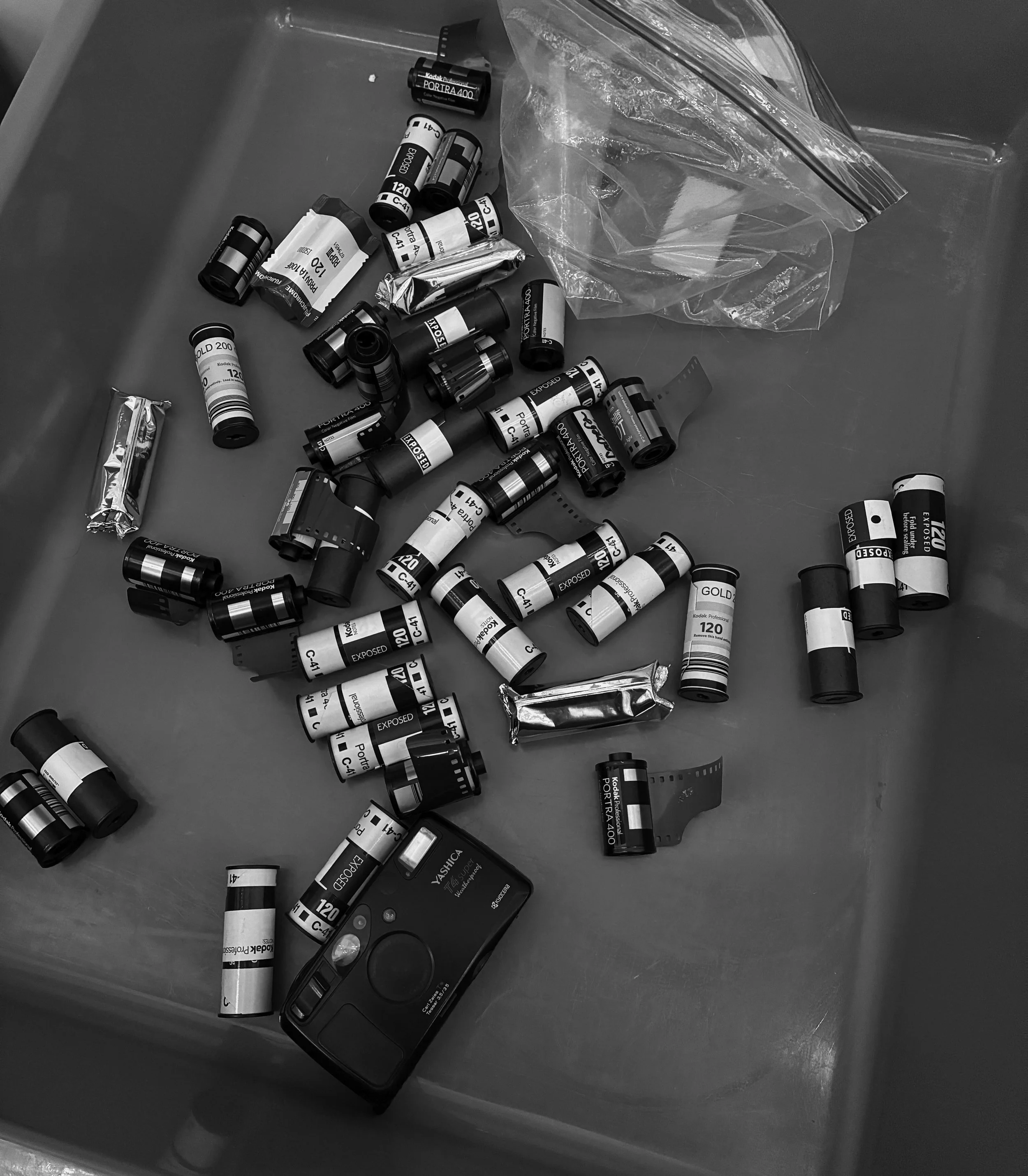How to Travel with Film
Traveling with film, in theory, is a dream many working photographers seek out: crisp 35mm images of the Italian coast, international portraits with subject matter you’ve been hired to capture, whatever it might be, that dream comes with the challenge of safely transporting your film through airport security.
With this guide, you can breathe easy and know how to confidently navigate the process of taking film through TSA or any airport security.
Traveling with film: what to know
Can I bring film on a plane?
Of course. Traveling with the film in your carry-on so you can request a manual inspection at security is the best way to protect it from damaging X-rays or the lack of temperature control under the plane or in baggage storage areas.
Do airport scanners ruin film?
Yes. While it’s dependent on the type of machine and your film’s ISO, airport scanners can absolutely ruin film. Airport scanners can cause shifts in color, fogged images, waves on the film or a loss in contrast. Usually, it’s not worth the risk. Avoid all X-rays and scanners when possible, especially the checked bag scanners as they’re usually more intense and damaging to film.
An Example of Portra 400 ran through a Computed Tomography (CT) scanner. Shot on a Yashica 124g Mat and Scanned and Developed by Richard. You can see visible grain and fog on the left side.
An Example of Portra 400 through a Computed Tomography (CT) scanner. Shot on a Yashica 124g Mat and Scanned and Developed by Richard. You can see visible grain and fog on the left side.
Can film go through TSA?
Yes, but with the request of a “hand check” to avoid going through the scanners. The TSA itself recommends this on its own website. It’s up to the officer you’re working with at the time, but you can and should always ask. We’ve found that they always say yes — it can just take some time if they’re busy so arrive early to security and you’ll be set.
How do you ask TSA to hand check film?
Wait until just before your belongings go through the scanners — you’re standing at the bins with your items ready to go and you’ve already showed your ID or boarding pass to the agent. This is usually the most convenient because you have some sort of a table to put your bag on and pull your film out of, and there is often an officer nearby to ask for a hand check before you walk through any applicable body scanners. (You’ll collect your film on the other side of the scanners where they often do random checks.)
Tips for packing film for airport travel
Pack your film in a carry-on bag. Make it easily accessible so you can pull out the film for a hand check when you get to TSA. If you have cameras with partially used rolls, you can ask for a handcheck of the camera itself too so you don’t have to remove the film or risk it getting damaged in the scanners.
Clearly label your rolls and remove unnecessary packaging — the less ambiguity around your film, the better. Many TSA agents are unfamiliar with film and may find it difficult to know what they’re looking at. Simple and clear explanations go a long way, and some officers get a kick out of the “old-school” vibe of film. They may ask questions purely out of curiosity.
How to take film through TSA
Here is a step-by-step process for taking film through TSA security checks at airports in the United States.
Find the TSA line like usual and join the queue (do not put your film in any checked luggage — it should be with you in your carry-on or personal item like a backpack)
Approach the front of the line when called (where they usually scan your ID, boarding pass or simply take a facial recognition photo)
Follow the normal procedure — emptying your pockets and putting all of your carry-on belongings in the bins
Once your items are settled, grab your film or any cameras with partially used film
Ask the closest TSA agent, “Excuse me, could I please have a hand-check for this film?” (Pay attention to how busy they are, be respectful, and less is more here — they don’t need to know everything, but if they ask, feel free to elaborate on the film or what type of photographer you are. Some will be curious!) Usually, it’s the TSA agent behind the tables providing instructions like “Empty your pockets, remove your jackets, etc.” who you can ask.
Send the rest of your items through the scanners
Walk through the body scanners
Collect your belongings and film/film cameras on the other end. The agent with your film will usually look for you and hand it directly back to you, or leave it on the counter where they conduct manual inspections.
Workarounds and words of advice for traveling with film cameras
Consider buying and/or developing your film on location so you don’t have to travel with the film! This can provide peace of mind, especially after traveling for a paid film job. Then, you can fly home with just your cameras and maybe any unused film (still ask for a hand check!)
Some international airports do not offer hand checks or they require advanced, written notice for film inspections. Do your research and make the necessary phone calls ahead of time when traveling outside of the country. (There’s a chart here with some information!)
A few folks recommend lead film bags for the times when the airport officers simply won’t hand check your items (usually internationally and not in the US). A bag like this, however, is great for the hand checks!
Add more time to your travel schedule — hand checks make the security checkpoint even slower, especially if you have lots of film that needs to be inspected.
Be prepared to plead your case (kindly and calmly) as a little education can go a long way. Some photographers mention higher ISOs than what they’re actually carrying just to prevent the film from going through the machines.
If you have a camera with a partially used roll, you can ask them to hand check the camera itself. You’ll simply hand the camera over before the scanners and then pick it up after you walk through body scanners to collect your things.
Photograph of Margaret Wroblewski’s Travel Bin
Photograph of Caitlin’s travel bin after TSA’s Hand Check
What our members say about traveling with film
As an online club for film photographers, we talk about this subject a lot. Here are some takeaways from our members.
Film inspections: worth it and easier with time
The first few times traveling with film can be overwhelming, but we promise — it gets easier with time! Every experience will be a little different depending on the layout and mood of the TSA officers, but you can usually walk away knowing you protected your film. It’s worth the request and extra time to safeguard your images.
Find more advice and helpful insights in our film photography club
Available to working artists for a simple monthly fee, we’d love to see you there. Learn more.
Film Photography Club
Let’s gather as film photographers to learn skills, connect, and develop your artistic practice.








